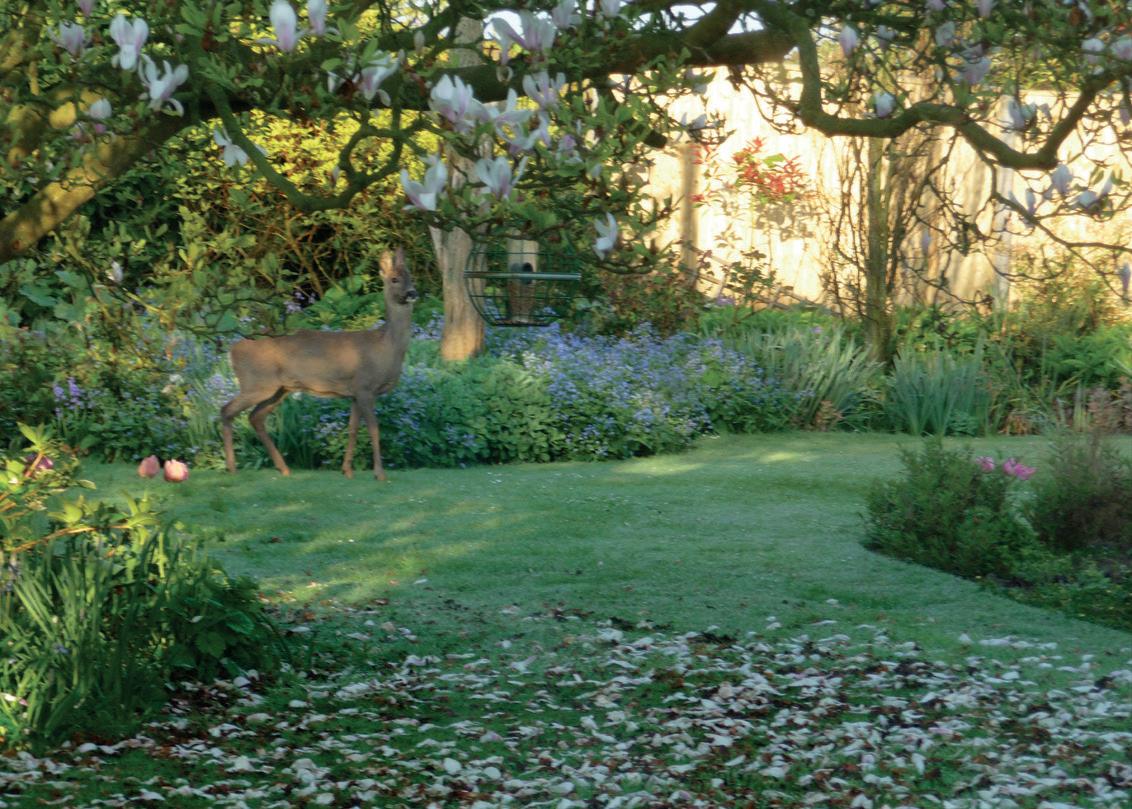
5 minute read
NICK ADAMES
SUBSIDISED INACTION
So here we are, after all the gloom of winter. It’s springtime…the rewilding process is growing rapidly around the old English countryside, those once well-tilled fields are sprouting weeds across unploughed surfaces and the ‘experts’ at DEFRA along with their ‘Minister Useless’ (yes, I know how it’s spelled) are growing prouder of their work by the day.
I know for a fact that much of this neglect of good farmland is involuntary. I may be partly to blame. Much is brought on by the spike in farm input costs and the increasingly recognised view, amongst real farmers, that there is little point in growing a crop properly, when, as I’ve said before, it’s more than likely that the end result will be a financial loss.
However, one hears, there are many operators who seem unable to resist possible long term ‘subsidised inaction’ who are intent on putting all or large parts of their land down to rewilding (neglecting) while thinking Britain will always get all the food we need from abroad.
As one who has experienced clearing scrub off long neglected (purchased!) land, I know what’s involved. Root clearance is but one aspect, but it soon becomes clear what the neglected land has been storing, in the way of what were once known as pests. Rabbits, foxes, badgers, which of course are all now, or probably close to becoming, protected species. I also know how long it takes to get such land back in order. Today, of course, you will also face the environmental lobby and numerous wildlife restrictions.
An interesting alternative crop we investigated over recent months was Miscanthus. It appears there is a growing demand for it as a replacement for fossil fuels and the market is said to be ‘guaranteed’ so, naturally, we looked at it. The plusses are that the rhizomes only have to be planted once every 15 or 16 years. It is reported to require no fertiliser after establishment. It comes for harvesting in early spring, when it is treated rather as hay, cut, maybe turned once and then baled into big bales. All well and good.
Then once baled it has to be stacked or stored, preferably so it doesn’t get penalised for exceeding 14% moisture content or set alight by vandals. All the aforementioned expense is quite reasonably the responsibility of the grower until it is picked up for movement to the end user, where cost is down to them. The forecast return, after the second year, is based (at the estimated guide price last December) on some nine to ten tons per hectare. The annual predicted return at 2021 prices is some £270 an acre. Less, of course, the harvesting costs.
Even then it sounds better than rewilding. It will certainly look better. But there appeared some fairly obvious negatives, which we started looking for when a proposed contract arrived for signature.
Firstly, there were some four to five pages of very small, close-typed terms, which not unnaturally made me wary. I learned many years ago, the more the conditions, the more they needed scrutinising and also that the smaller they were printed, the more one needed to be ‘double wary!
These were printed exceptionally small, around font size 4 or 6. I managed to read enough of them before the alarm bells started to go off in my head. Every cost and problem was to be paid by the grower, even failure of the ‘seed’, or rhizomes, which the buyer was initially providing. The soil test results the grower had to fund, but were to be handed over to the buyer. Surely if they wanted tests they were keeping, they should pay? And so it went on, until what initially had looked to be just the sort of crop we wanted to grow in these uncertain times was suddenly a crop I couldn’t risk touching with the proverbial bargepole.
Perhaps a bit of competition in the market might improve things, but we fast decided it’s not for us, not now, not on those terms. Although the crop does appear to have much going for it - 15 years before a need to replant, likes wet ground and stands flooding, no annual fertiliser requirements, utilises contractors’ existing harvesting machinery and avoids the stupidity of rewilding! What would you prefer, getting tied down to a contract you could barely read, getting your leg bitten off by a wolf, being charged down by a bison or fallowing the land for next year?
It’s good to see, at long last, our national press and media taking the sewage release situation seriously. It is a national disgrace that this country, so keen to call itself a ‘world leader in care for the environment’ can allow such practices to continue.
The devastation this (often raw) excrement must have on the marine life around our beaches and seas is unimaginable. Apart from its effects on our own land, what about the creatures that try to survive in our waterways? That the solids from waste treatment plants (that’s sewage treatment works) will end up in the world’s oceans is to me understandable, but that they are being allowed to get there in anything but a fully treated state is surely criminal.
Yet when the pressure is put on them, our supreme environmental arbiters the Environment Agency quickly close their one good eye and say “It’s all because the public are disposing of wet wipes and other household items down their toilet” or that the farmers are “allowing spray drift to get into ditches”. They make no mention of the part they and their ‘buddies’ in the water companies play in dumping untreated sewage or neglecting the waterways. “It’s not our fault, guv.”










